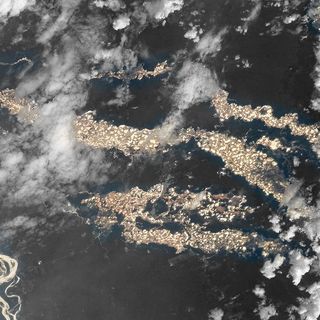Deep down in the Antarctic ice shelf, more than 500 kilometers away from nutrients and sunlight, live stationary animals, never before seen by scientists. Geologists have discovered a new species of ‘extremophiles’ — organisms found in extreme environments that have been thought too hostile to sustain life — while drilling through the Antarctic ice.
The discovery was accidental. While trying to collect a sediment core from beneath the Filchner-Ronne ice shelf, scientists hit a boulder, which had strange lifeforms that resemble ocean sponges attached to it. While the boulder disappointed geologists who were hoping to collect mud samples from the seafloor, biologists on the team were thrilled to have discovered new organisms.
The discovery is especially interesting because scientists have found mobile animals such as shrimp beneath such ice shelves in the past, but never stationary animals. That far deep in ice, in a hostile environment without nutrients, scientists had previously thought only animals that can move around in search of food could survive. The discovered sponge-like lifeforms, however, stick to rock and wait for food, which makes their existence even more baffling.
Related on The Swaddle:
Leading Climate Scientists Call for ‘Declaring a State of ‘Planetary Emergency’
The only source of food for these organisms can be floating plants and animal life that passes by the boulder. Scientists said the nearest plant life is approximately 1,000 miles away from the boulder. Just how these extremophiles thrive is a question future expeditions will need to explore and solve.
In the meantime, study author and marine biologist Huw Griffiths, of the British Antarctic Survey, tells NBC, “There are still things that we have to learn. There are still animals out there that can break the rules that we have written for them.”




